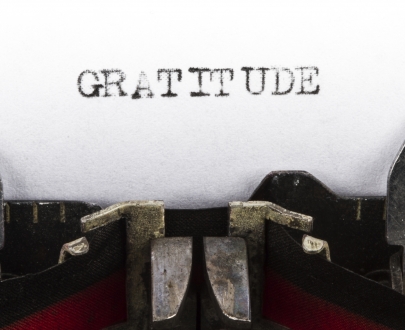 Lesson Plan
Lesson Plan
Background & Learning Outcomes:
Benefits of gratitude for children include increased feelings of well-being and reduced feelings of depression and disconnection. Studies have documented[1] that positive relationships and even improved school satisfaction can result from introducing the practice of gratitude in schools.
In this lesson, students will think critically, make meaningful personal connections and engage with others to share and develop ideas.
Materials Required:
- Gratitude HD, Moving Art on Youtube
- "The Thankful Book" by Todd Parr (or alternate)
- A selection of photographs, calendar images or Visual Talking Cards
- "A is for Awesome" by Dallas Clayton (or alternate)
Teaching and Learning Activities:
-
Activate Thinking: Co-create and jot down student responses to the questions: What is gratitude? What does it mean to be grateful? According to the world’s leading gratitude researcher Robert Emmons, gratitude is an “affirmation of goodness where we affirm that there are good things in the world.”
-
Give each student a post-it note to jot down one thing they notice, one thing they think or one thing they wonder while watching the video. After the video, invite students to post their thinking on a chart with three columns, what they notice/think/wonder.
-
In pairs, use the following guiding questions: What did you notice? What did you think? What did you wonder? How did the video make you feel? What did you connect with in the short video?
-
Introduce the book The Thankful Book[2] by Todd Parr. (Replace or add in other gratitude related books that are age-appropriate for students.)
-
Share the image of the front cover with learners, along with the title. Have learners predict what the contents of the book might include.
-
Read the book
-
After the story, have pairs discuss what they noticed, what they connected with and what they are thankful for?
-
Introduce the task of finding gratitude in photographs, calendar images, or Visual Talking Cards. Display a variety of images (e.g. spread them out on the floor) and have students choose a photograph to identify, unpack and talk about. “This makes me think of…” “I am grateful for…”
-
Invite learners to self-select a photo card that they connect to or that reminds them something they are grateful for in some way.
-
Allow time for quiet thinking, then Partner Turn and Listen to communicate the gratitude connection with the image.
-
Switch and connect with 3 different people.
-
As a whole class, invite learners to share what they heard from their classmates about gratitude.
-
-
Read the book A is for Awesome[3] by Dallas Clayton. (Replace or add in related books that are age-appropriate for students.)
-
ABC Brainstorm: What am I grateful for? Invite learners to use an ABC Brainstorm Template[4] to generate a list of things they are grateful for. e.g. “A is for awesome adventures outside…”
-
Closure: What is gratitude? What does it mean to be grateful? Share and discuss the phrase; “ We find what we look for…”
-
Exit task: Be grateful for what you have. Notice what’s working/what’s right in the world.
Adaptations:
-
Students create their own gratitude jar and fill it with sentence strips describing what they are grateful for. In future classes, students add more slips or draw a gratitude slip from their jar as a gratitude reminder.
-
Build on the students' co-constructed definition of gratitude with an additional lesson plan using art or photography.
According to researchers Kristin Layous and Sonja Lyubomirsky (2014), the benefits of gratitude practices are many. They include:
- increased feelings of well-being,
- reduced depression,
- less substance misuse,
- fewer aggressive behaviours,
- lower other risk factors for mental disorders,
- more prosocial behaiours,
- more positive relationships,
- increase acceptance among peers and
- improved school satisfaction.
ABC brainstorming is a technique to activate students' background knowledge about a topic. Students are invited to think of a word or phrase associated with the topic, matched to each letter of the alphabet.
Have students list the letters of the alphabet on a sheet of paper (or do an internet search for a printable ABC Brainstorm sheet). Let them work individually at first, thinking of as many words as they can that could be associated with the topic. Then, in pairs, have them fill in the blanks beside each letter of the alphabet. Finish with a report out.
Todd Parr's books have taught kids about unconditional love, respecting the earth, facing fears, and more, all with his signature blend of playfulness and sensitivity. The Thankful Book celebrates all the little things children can give thanks for.
In A is for Awesome, the message of dreaming big and living life to its fullest permeates every page of this book, inviting readers to "learn some new letters that you can use to make magical words and share big ideas."
This primes young students for the next activity; ABC Brainstorming.
